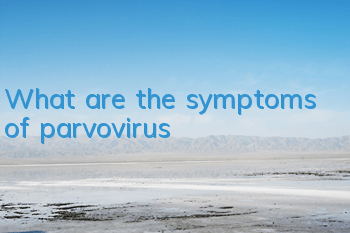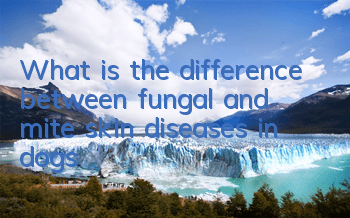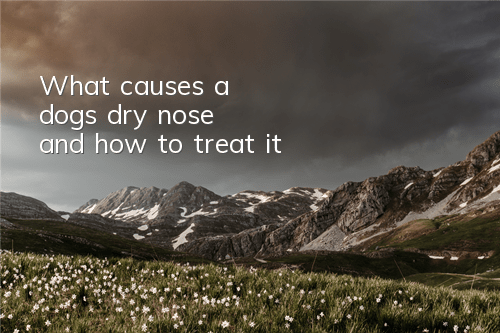After dogs are exposed to parvovirus, physical symptoms will appear within 3-14 days, with the average onset time being 5-7 days. Clinical symptoms include: loss of appetite, depression, fever, vomiting, diarrhea, and feces with a fishy odor unique to canine parvovirus. The incidence rate of adult dogs (dogs over twelve months old) is very low. If they are not very pure dogs or adult dogs with inbreeding, they will generally not show obvious symptoms. They will only show a certain fishy smell in their feces and loss of appetite. If No treatment is required if there is no aggravation.
Dogs infected with canine parvovirus can be clinically divided into enteritis type and myocarditis type.
Enteritis type
The incubation period of natural infection is 3 to 14 days. The disease initially manifests as fever, with body temperature reaching above 40°C, depression, inability to eat, and vomiting. The initial vomitus is undigested food and white foam (gastric acid), and then becomes mucus-like and yellow-green liquid. Diarrhea started one day after the onset of symptoms. At the beginning of the disease, the feces is in a thin paste or semi-formed shape, with a certain fishy smell. As the disease progresses, the stool becomes dark green or yellow jelly-like. Subsequently, the feces turned into tomato paste color or coffee color, smelled fishy, the frequency of defecation was variable, and there were symptoms of tenesmus. After bloody stool, the sick dogs show sunken eyeballs, dry nose, general weakness, significant weight loss, accompanied by pale conjunctiva and oral mucosa, and severe anemia symptoms. If the disease is not treated in time, it can cause poisoning by toxin absorption in the intestinal contents. Until shock and death. Occasionally, dogs have the following symptoms: their feces is transparent watery material with blood streaks in it and a fishy smell, or their feces is white and watery.
There are three main types of enteritis in puppies:
①Infectious enteritis;
② Parasitic enteritis;
③Food-induced gastroenteritis.
The full name of infectious enteritis in puppies is transmissible gastroenteritis. Canine parvovirus is the pathogen, also known as canine parvovirus gastroenteritis. Parvovirus parasitizes in the gastrointestinal mucosa of puppies (it also infects adult dogs). It divides and reproduces, causing damage to the gastrointestinal mucosa, causing enteritis with bleeding of the small intestinal mucosa. After the puppies are sick, they will vomit and have diarrhea, and the vomit will range from food to gastric juice, and even bile, which is intractable vomiting; causing a large amount of body fluid loss and failure to eat; the diarrhea will change from normal abdominal stool to watery diarrhea, and when the disease is serious, there will be tomato Bloody stool spurted out from the anus, which was very smelly. Eventually, sick puppies die from dehydration, secondary bacterial infection, and myocarditis. After puppies suffer from parvovirus enteritis, treatment includes intravenous rehydration, antidiarrheal, hemostasis, anti-inflammation, antiemetic and injection of canine parvovirus monoclonal antibody (based on the canine parvovirus monoclonal antibody developed by Comrade Tian Kegong of the Experimental Animal Center of the Academy of Military Medical Sciences). method with the best clinical efficacy).
Parasitic enteritis in puppies is mainly caused by large roundworm infection. Parasitic enteritis causes the feces of puppies to be dry and thin at times. The symptoms of canine parvovirus infection are different: roundworm diarrhea is mainly characterized by insufficient absorption of feces, and there is little blood in the feces; hookworm diarrhea has blood streaks in the feces, and in severe cases, bloody stools, bloody stools with a fishy smell; Coccidiosis-infected diarrhea has blood in the stool, and in severe cases, bloody stool.
Food-induced enteritis (including gastritis) is related to a sudden change of food or unclean food for a long time. Newly purchased puppies are most susceptible to it. Because the new owner of the dog did not know the puppy's original food and fed the puppy a different food than before, the puppy's gastrointestinal tract could not adapt to this sudden food change in a short period of time, and the digestive enzymes could not adjust quickly. And adapt to this change, resulting in insufficient digestion, and insufficiently digested chyme is excreted with a large amount of water, causing osmotic diarrhea, which is related to food allergies and intolerance. Food that has been left unclean (unheated) and taken directly from the refrigerator (unheated) is another cause of food-induced diarrhea, which can cause bacterial infection, cold irritation and indigestion.
The diagnosis of canine parvovirus enteritis, parasitic enteritis and food-induced diarrhea is to go to a regular animal hospital for a fecal examination, and the diagnosis can be confirmed based on the test results within 40 minutes.
Therefore, when pet owners treat their puppies for diarrheal diseases, they should collect the puppy’s feces and put it in a plastic bag or glass vial to bring to the veterinarian. Puppies with parasitic diarrhea should be treated with deworming, anti-inflammatory and anti-diarrheal treatments, and those who have not eaten for many days should be given fluids. Puppies with food-induced diarrhea should be stopped from diarrhea, and those complicated by bacterial infection should be anti-inflammatory. If the food is changed (especially for puppies with food allergies and intolerances), puppies can be given Baolu hypoallergenic diet.
Myocarditis type
It is more common in puppies about 40 days old. The sick dogs have no obvious clinical symptoms. Some dogs suddenly have difficulty breathing, heart failure, and die within a short period of time; some sick dogs die after mild diarrhea. Canine parvovirus myocarditis is caused by canine parvovirus attacking the dog's heart muscle cells, which can destroy the dog's heart muscle cells in a short period of time. The affected dog then develops wheezing, cyanosis of the oral mucosa and skin, and sometimes sudden collapse and death are the only physical symptoms of the disease in puppies. Puppies that tolerate it can still die of the disease weeks or even months after infection due to permanent myocardial damage. It is more common in puppies, and there is a 10% chance that puppies will have canine parvovirus that attacks the dog's intestinal epithelial cells and cardiomyocytes at the same time.








